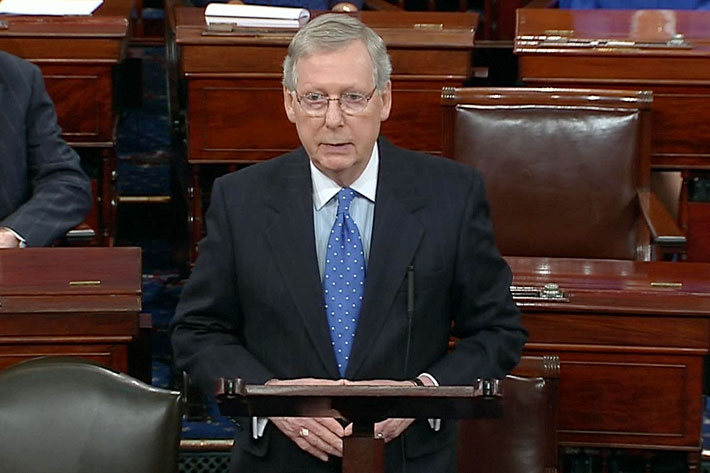By James Irwin
Mitch McConnell (R-Ky.) has gone from Senate minority leader to majority leader, John Boehner (R-Ohio) has secured a third term as Speaker of the House and 64 freshmen have been sworn in as the newest members of Congress.
The Republican Party controls both the Senate and House for the first time since 2006. The first few weeks of the new session is expected to bring about a re-emergence of old floor fights (hello, again, Keystone XL pipeline) and shed light on how Republicans will attempt to handle an inner-party conflict between its conservative and more moderate wings. There might even be some bipartisan cooperation, said Steve Billet, legislative affairs program director and chief of staff of the Graduate School of Political Management.
Worth watching:
1. Keystone
House-led Republicans have approved the pipeline nine times, only to see the legislation die in the previously Democratic-controlled Senate, most recently by one vote in a Nov. 18 decision that sealed Democrat Mary Landrieu’s re-election defeat in Louisiana. The House will vote on the pipeline again Friday.
“From an agenda standpoint, they are teeing up the Keystone XL issue in the first week and will move pretty quickly on it,” Dr. Billet said. “Obviously that will present some challenges to the president about whether he signs it or vetoes it.”
If Keystone legislation gets through the Senate and President Obama vetoes the bill, it goes back to Congress and would require a two-thirds majority to override.
 Senate majority leader Mitch McConnell (R-Ky.) will attempt to lead a Republican Congress that includes a moderate wing and a powerful conservative caucus. (Photo provided by the Office of Senator Mitch McConnell)
Senate majority leader Mitch McConnell (R-Ky.) will attempt to lead a Republican Congress that includes a moderate wing and a powerful conservative caucus. (Photo provided by the Office of Senator Mitch McConnell)
2. Intra-party conflict
Among the biggest challenges for the Republican Party: how to find common ground between its powerful conservative caucus and its moderate wing. Success on this end could pave the way for bipartisan cooperation, while failure means warring groups within the GOP unable to agree among themselves, let alone get bills signed by the White House. GSPM Associate Professor Matt Dallek said these governing challenges within the party became evident as early as Election Day. Eight weeks later, they haven’t changed, Dr. Billet said.
“It’s a challenge to the leadership on whether or not they can control the folks on the right wing of their party and bring them to the table and reach compromise positions—especially in the Senate,” he said. “There are people in McConnell’s own party that have other ideas about what the Republicans should be doing with their new majority but it’s very tough in the Senate in the absence of a veto-proof majority, which they don’t have.”
3. Room to work
Bipartisan cooperation on a few issues is a strong possibility, Dr. Billet said, and could help defrost tension between the parties. The approval of in-progress free trade agreements with Pacific Rim countries and Europe are at the top of the list most Republicans and Democrats agree on. Trade, in particular, is an opportunity for both parties to show a desire to govern, Dr. Billet said. A way of demonstrating that would be for Congressional Republicans to give the administration trade negotiation authority, which would mean any agreement negotiated by President Obama would be subject to an up-or-down vote in Congress, with no amendments.
“Trade would be a major victory for everyone—the economic benefits of free trade have been demonstrated over and over again, and it’s one of those deals where everyone gets to take some credit,” Dr. Billet said. “Now, there could be some reluctance on the part of the Republicans to give that authority to the president because clearly the Democrats could take some credit for it. We’ll see where this goes because, philosophically, free trade is a big deal for Republicans.”




